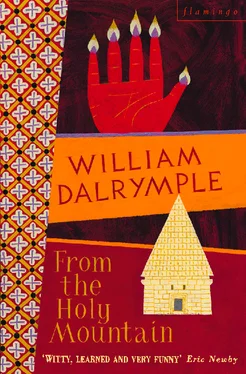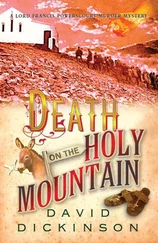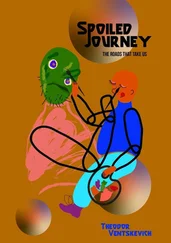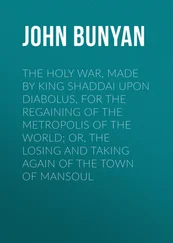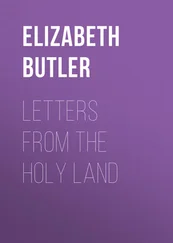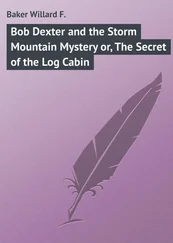‘Police?’ I asked.
‘Inshallah , village guards,’ said Mas’ud, slowing down. ‘Just hope it’s not PKK. You can’t tell at this distance. Either way, hide that notebook.’
We slowed down. The men walked towards us, guns levelled. They were village guards. The leader exchanged a few words with Mas’ud and waved us through without checking our documents. But at a second checkpoint a few miles later we were not so lucky. The commando at the barricade indicated that we should pull in. We did as we were instructed and parked beside a large single-storeyed building.
The building had once been a police station but had now been taken over by the army. Troops were milling around in full camouflage. To one side, in front of a fortified sandbag emplacement, stood a six-wheeled Russian armoured personnel carrier; on the other were two light tanks and four or five Land-Rovers with their canvas back-covers removed and heavy machine guns mounted over the cabins.
The commando took our documents – Mas’ud’s ID and my passport – and left us waiting in a corridor, saying he had to get permission from his superior before we could proceed. After half an hour a telephone rang, and shortly afterwards a group of maybe twenty soldiers jumped into the Land-Rovers and set off at speed. We continued to stand in the corridor.
Eventually we were admitted to a room where an officer was sitting behind a desk. He spoke a little English, told us to sit down, and offered us tea. Then he asked me what I was doing and where I was going. I told him my destination, but following the advice of the journalists in Istanbul, I did not produce my press card, which I kept in my pocket. The officer scribbled down a few details, repeated the advice that we should be off the road by four at the latest, and handed back our documents.
‘Be careful,’ he said.
We saw what he meant a few miles later. By the side of the road lay the fire-blackened hulk of a car. It had been burned the previous week, said Mas’ud, at a PKK night-time roadblock.
Soon after we passed the skeleton of the car, the road left the Tigris and the landscape began to dry out. The vines disappeared and were replaced by fields of sunflowers; a few coppices filled the valley bottoms. Then they too vanished and we entered a plain of rocky, barren scrub. A convoy of six APCs passed us from the opposite direction. We drove on, passing a succession of roadblocks and more armoured convoys.
Shortly before lunchtime we drove through Mardin, then turned off the main road onto a track; over a hillock, surrounded by silver-grey slopes of olive groves, rose the unmistakable silhouette of the melon-ribbed cupolas of Deir el-Zaferan, the Saffron Monastery.
Until the First World War, Deir el-Zaferan was the headquarters of the Syrian Orthodox Church, the ancient Church of Antioch. The Syrian Orthodox split off from the Byzantine mainstream because they refused to accept the theological decisions of the Council of Chalcedon in 451 A.D. The divorce took place, however, along an already established linguistic fault-line, separating the Greek-speaking Byzantines of western Anatolia from those to the east who still spoke Aramaic, the language of Christ. Severely persecuted as heretical Monophysites by the Byzantine Emperors, the Syrian Orthodox Church hierarchy retreated into the inaccessible shelter of the barren hills of the Tur Abdin. There, far from the centres of power, three hundred Syrian Orthodox monasteries successfully maintained the ancient Antiochene liturgies in the original Aramaic. But remoteness led to marginalisation, and the Church steadily dwindled both in numbers and in importance. By the end of the nineteenth century only 200,000 Suriani were left in the Middle East, most of them concentrated around the Patriarchal seat at Deir el-Zaferan.
The twentieth century proved as cataclysmic for the Suriani as it had been for the Armenians. During the First World War death throes of the Ottoman Empire, starvation, deportation and massacre decimated the already dwindling Suriani population. Then, in 1924, Ataturk decapitated the remnants of the community by expelling the Syrian Orthodox Patriarch; he took with him the ancient library of Deir el-Zaferan, and eventually settled with it in Damascus. Finally, in 1978, the Turkish authorities sealed the community’s fate by summarily closing the monastery’s Aramaic school.
From 200,000 in the last century, the size of the community fell to around seventy thousand by 1920. By 1990 there were barely four thousand Suriani left in the whole region; now there are around nine hundred, plus about a dozen monks and nuns, spread over the five extant monasteries. One village with an astonishing seventeen churches now only has one inhabitant, its elderly priest. In Deir el-Zaferan two monks rattle around in the echoing expanse of sixth-century buildings, more caretakers of a religious relic than fragments of a living monastic community.
Nineteenth-century travellers who visited Deir el-Zaferan often thought it looked more like a fortress than a monastery, and they had a point. Standing under the great ochre battlements, I hammered on the thick, heavily reinforced beaten-metal gate while Mas’ud locked the car. After a few minutes a young monk’s bearded face peered suspiciously at us through an arrow-slit. Soon afterwards there was a rattling of bolts and chains and the gate swung open. Abouna Symeon stared at us with amazement.
‘You had no trouble getting here?’ he said in English.
I described our journey.
‘Things are very bad at the moment,’ he said. ‘We have not had any visitors for many months. No one will come. There is no security in these mountains.’
Abouna Symeon led us up a dark gallery which opened into a wide and shady cloister. In the bright light of the cloister-garth a flat-capped (but barefoot) gardener was watering pots full of geraniums and anemones. To his side rose an astonishing arcaded portico, supported on two deeply cut pilasters rising to a pair of elaborate Corinthian capitals. It was late Roman, yet, astonishingly, it was still employed for its original purpose, and was inhabited by the direct spiritual descendants of the original builders. Here bands of classical acanthus decoration, of a quality equal to the finest Byzantine sculpture surviving in Istanbul, covered sanctuaries in which the Aramaic liturgy was still chanted, unchanged from the day they were built. It was odd to think that these barren and remote hills, now terrorised by troops and guerrillas, and home only to poor and illiterate peasant farmers, were once places of considerable sophistication.
‘It is beautiful,’ said Abouna Symeon, coming up behind me. ‘But for how much longer? Maybe the next time you come sheep will be grazing here.’
‘Is that likely?’
‘All our people are leaving. One by one our monasteries and our Christian villages are emptying. In the last five years – what? – twenty villages around here have been deserted. Perhaps nine are left; maybe ten. None has more than twenty houses. If the door were open – if the rest of our people could get visas for the West – they would all go tomorrow. No one wants to bring up their children in this atmosphere. They want to go to Holland, Sweden, Belgium, France. Not many years are left for us here.’
We walked through the cloister. At one end sat another monk, a much older man, wearing the characteristic Syrian Orthodox black hood embroidered with thirteen white crosses representing Jesus and his apostles. He was bent over a desk, peering shortsightedly at the page in front of him, and in his hand he held a pen. As we drew near I saw that he was writing in Aramaic with a thick, broad-nibbed pen. I was just about to introduce myself when he looked up.
‘You are Mr William?’
Читать дальше
